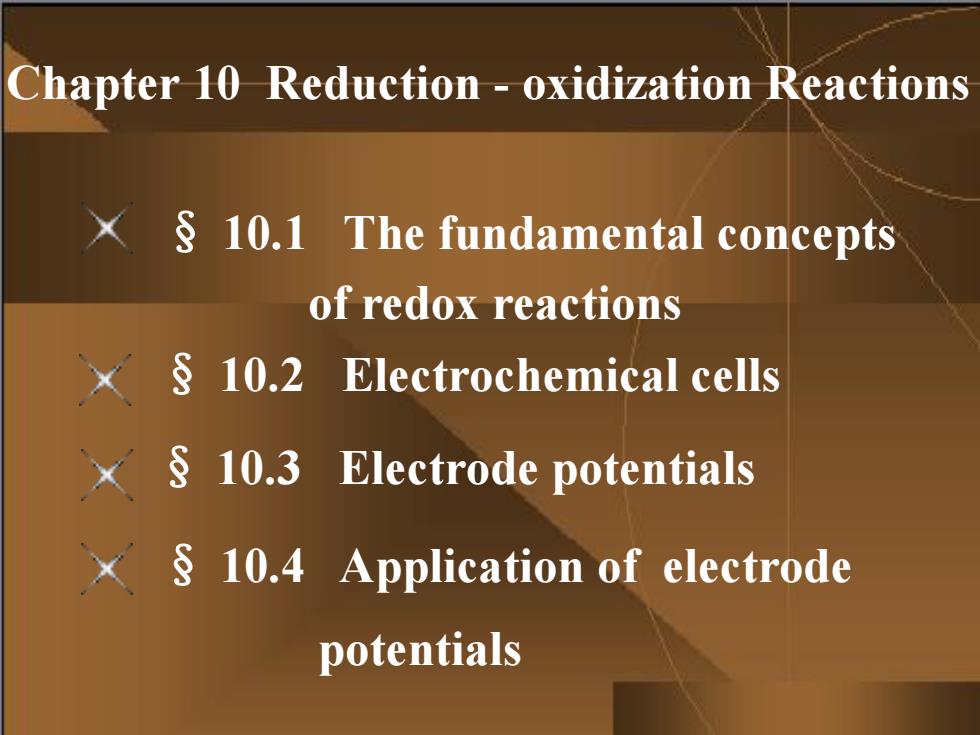
Chapter 10 Reduction oxidization Reactions X 10.1 The fundamental concepts of redox reactions X 10.2 Electrochemical cells x 10.3 Electrode potentials X 10.4 Application of electrode potentials
Chapter 10 Reduction - oxidization Reactions § 10.1 The fundamental concepts of redox reactions § 10.2 Electrochemical cells § 10.3 Electrode potentials § 10.4 Application of electrode potentials
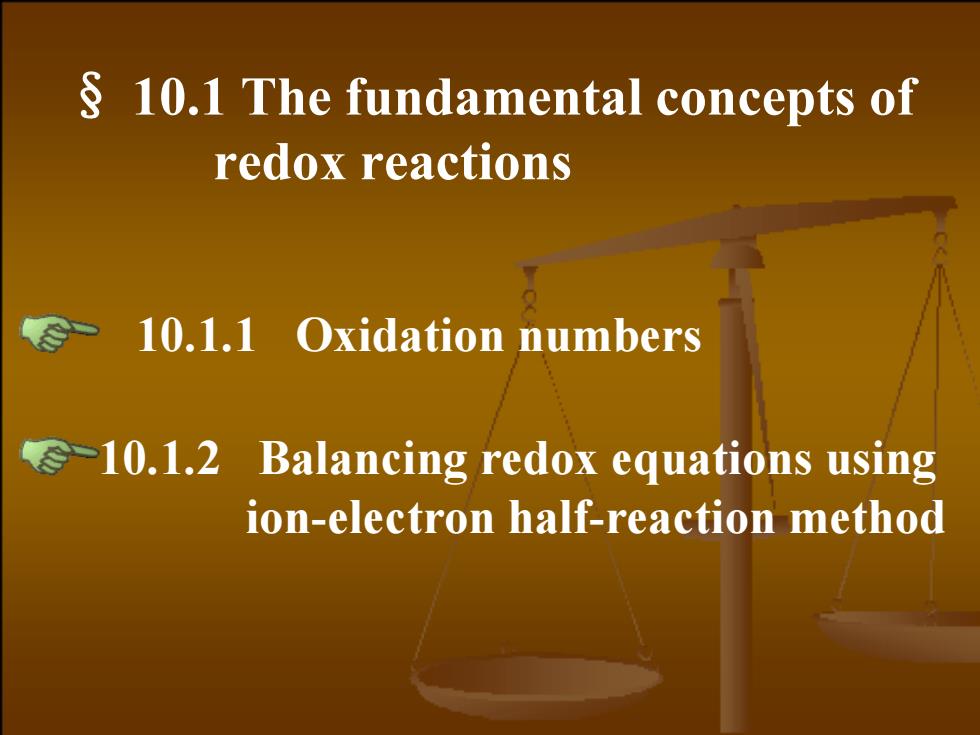
10.1 The fundamental concepts of redox reactions 10.1.1 Oxidation numbers -10.1.2 Balancing redox equations using ion-electron half-reaction method
§ 10.1 The fundamental concepts of redox reactions 10.1.1 Oxidation numbers 10.1.2 Balancing redox equations using ion-electron half-reaction method
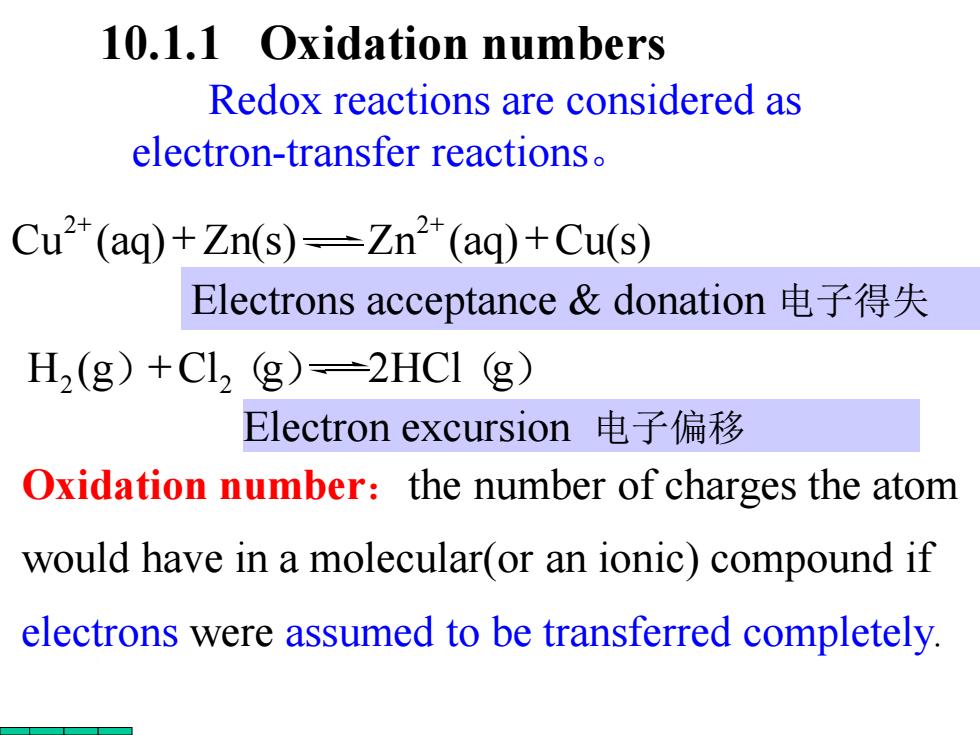
10.1.1 Oxidation numbers Redox reactions are considered as electron-transfer reactions. Cu2(aq)+Zn(s)-Zn2*(aq)+Cu(s) Electrons acceptance&donation电子得失 H2(g)+C12g)=2HC1g) Electron excursion电子偏移 Oxidation number:the number of charges the atom would have in a molecular(or an ionic)compound if electrons were assumed to be transferred completely
10.1.1 Oxidation numbers Oxidation number:the number of charges the atom would have in a molecular(or an ionic) compound if electrons were assumed to be transferred completely. Redox reactions are considered as electron-transfer reactions。 Cu (aq) Zn(s) Zn (aq) Cu(s ) 2 2 + + + + Electron excursion 电子偏移 H2 (g)+Cl2(g) 2HCl(g) Electrons acceptance & donation 电子得失
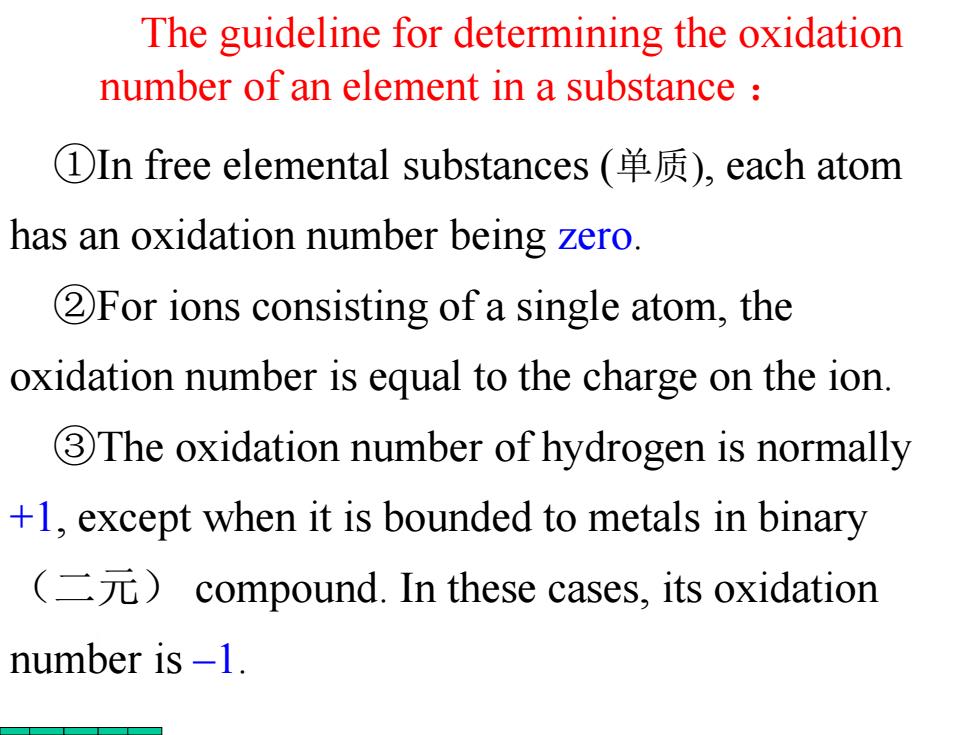
The guideline for determining the oxidation number of an element in a substance ①In free elemental substances(单质),each atom has an oxidation number being zero. 2For ions consisting of a single atom,the oxidation number is equal to the charge on the ion. 3The oxidation number of hydrogen is normally +1,except when it is bounded to metals in binary (二元)compound.In these cases,.its oxidation number is -1
The guideline for determining the oxidation number of an element in a substance : ①In free elemental substances (单质), each atom has an oxidation number being zero. ②For ions consisting of a single atom, the oxidation number is equal to the charge on the ion. ③The oxidation number of hydrogen is normally +1, except when it is bounded to metals in binary (二元) compound. In these cases, its oxidation number is –1
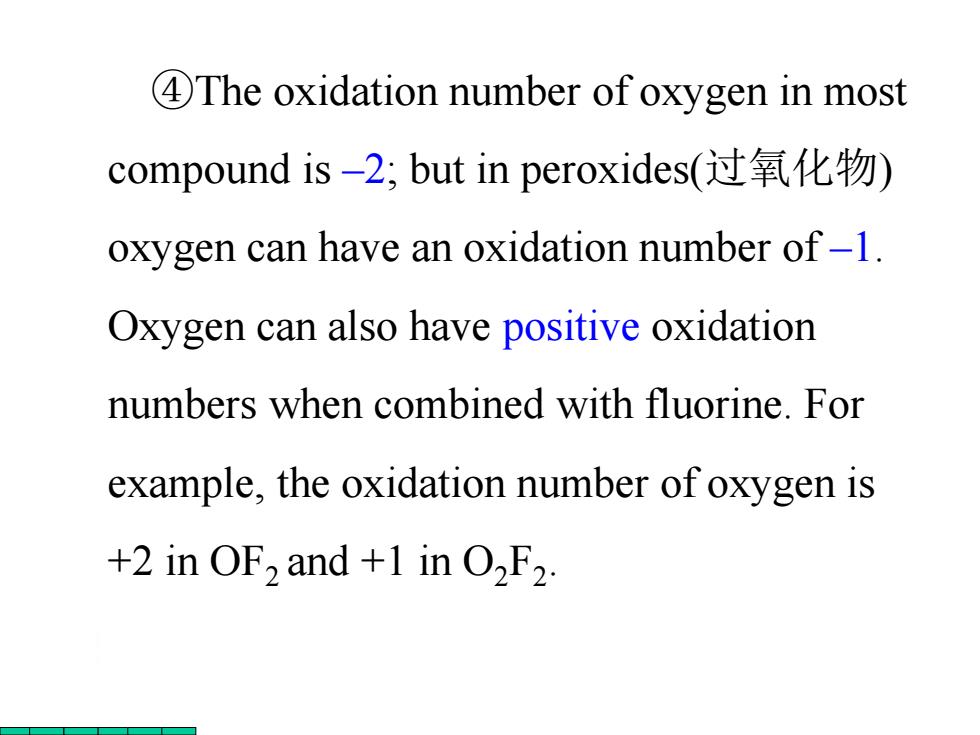
4The oxidation number of oxygen in most compound is-2,but in peroxides(过氧化物) oxygen can have an oxidation number of-1 Oxygen can also have positive oxidation numbers when combined with fluorine.For example,the oxidation number of oxygen is +2 in OF2 and +1 in O2F2
④The oxidation number of oxygen in most compound is –2; but in peroxides(过氧化物) oxygen can have an oxidation number of –1. Oxygen can also have positive oxidation numbers when combined with fluorine. For example, the oxidation number of oxygen is +2 in OF2 and +1 in O2F2